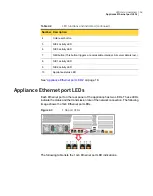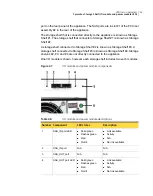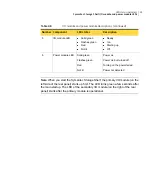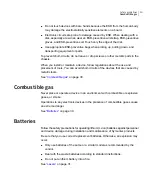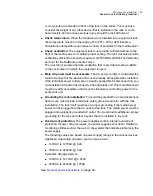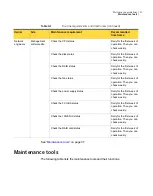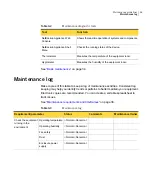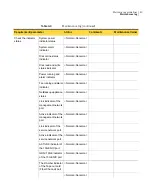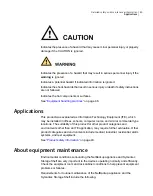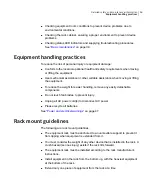
■
Special compressed gas
■
Cotton stick (medical cotton or long fibre cotton)
■
Special magnifier for optical connectors
When replacing a fibre, cap the connector of a fibre that is not used. Avoid bending
or wrapping fibers around narrow or sharp objects.
See
“Precautions when troubleshooting with the power turned on ”
on page 32.
Precautions when troubleshooting with the power
turned on
This section describes the safety precautions you need to follow in case you need
to troubleshoot the device when the power is on. Follow these safety precautions
to avoid personnel injury and device damage.
■
Before checking the device installation and cable connections, confirm that all
power supplies to the device are off. Incorrect cable connections or loosened
cables can cause personnel injury or damage to the device.
■
Do not touch the connectors of power cords, PDU cords, or communication
cables. Otherwise, you might receive an electrical shock.
■
Do not touch the device with bare hands in an electrostatic sensitive area. To
avoid personnel injuries or damage to the devices, take ESD-preventive
measures.
If you touch power or PDU cords to perform operations when the power is on, you
must remove the ESD-preventive wrist strap to prevent electrocution. To avoid data
loss when the power is on:
■
Do not unplug cords.
■
Turn off all the disk drive activity before turning off the power to the device.
■
Wait for a minute before reconnecting the power supply.
During troubleshooting, confirm that:
■
The troubleshooting area is clean and dry.
■
The cords are intact and effective grounding measures are taken.
Never carry out troubleshooting in stormy weather when lightening is a possibility.
See
“Precautions when troubleshooting with the power turned on ”
on page 32.
32
Safety guidelines
Precautions when troubleshooting with the power turned on

